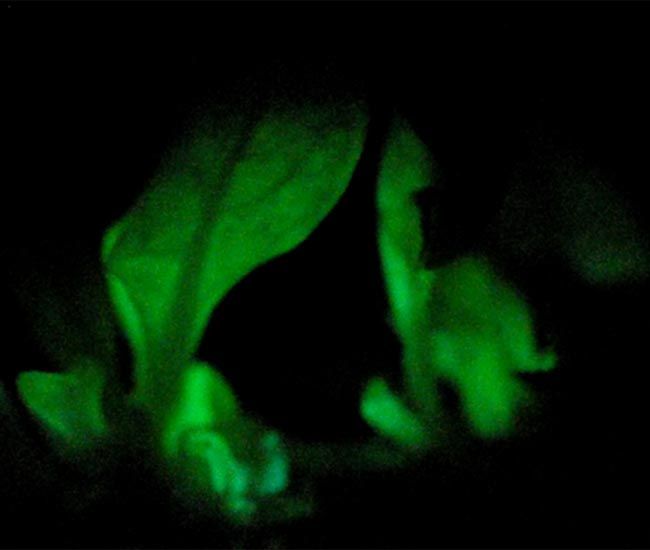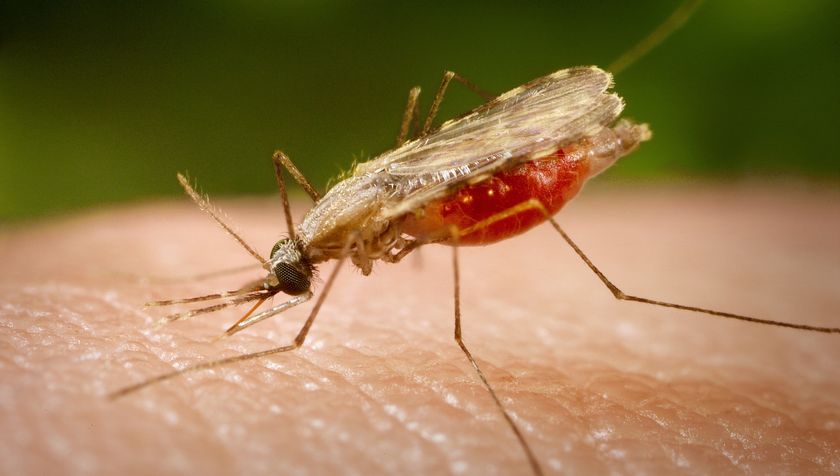Transplanted Genes Let Plants Light Up

Red roses with glowing petals, poinsettias lit up for Christmas and shrubbery that illuminates communities at night, rendering street lights unnecessary — that's the vision behind the company BioGlow, Inc.
This vision made an important step toward reality when one of its founders, Alexander Krichevsky, and other researchers succeeded in transplanting into tobacco plants the genes that allow marine bacteria to light up.
This is the first time plants have been made to glow on their own, according to Krichevsky, an assistant professor of genetic engineering at the State University of New York in Stony Brook.
"All previously made 'glowing plants,' genetically engineered or not, had to be either sprayed with chemicals or illuminated with external light sources to produce a temporary glowing effect," Krichevsky told LiveScience in an e-mail.
Even so, the light of the leaves is not yet quite what the founders of BioGlow want it to be.
"You have to be five minutes in the dark to see them with your eyes," Krichevsky said, referring to the period humans' eyes typically need to adjust to the dark. But, "we are sure we are going to make them glow as bright as fireflies."
There are about 30 different systems used by living things – bacteria, tiny dinoflagellates, fungi and insects – to produce their own light, according to Krichevsky and colleagues, who published their results in the journal PLoS ONE on Nov. 12. They zeroed in on the lighting system used by marine bacteria.
Sign up for the Live Science daily newsletter now
Get the world’s most fascinating discoveries delivered straight to your inbox.
Krichevsky and his colleagues inserted about six bacterial genes – which code for luciferase, an enzyme that catalyzes a light-emitting chemical reaction and other necessary ingredients for the chemical reaction – into the genetic material inside the plants' pigment-containing structures called plastids.
Glowing marine bacteria are free-living species that serve as decomposers that feed on dead organisms and as symbionts that provide light for the fish and squid they inhabit. Inserting the bacterial genes made the most sense, because everything green you see in a plant has bacterial ancestry, according to Krichevsky.
Plant leaves appear green because they contain the pigment chlorophyll in structures called chloroplasts. At one time, chloroplasts were free-living bacteria that eventually became partners, or symbionts, with other cells, leading to the evolution of plants.
The color of the glow is determined by the luciferase, which could be modified to emit different colors, so, for instance, flower petals could glow red, according to Krichevsky.
When asked if the thought of glowing plants might bring images of nuclear contamination to mind for some, Krichevsky said he had yet to hear that reaction from those in the floriculture community or the general public.
"The only reaction I get is, 'Wow, I can get glowing roses for Valentine's Day,'" he said.
Because plastids, the organelles that contain the pigments, are maternally inherited – that is, they are transmitted to the next generation from the ovule that becomes a seed – there is no risk that the genes would be transmitted into the environment by pollen, he said.
Although this project has the potential to bring new light to the floriculture industry, glowing flowers won't be showing up at corner florists' windows too soon, said Tal Eidelberg, cofounder of BioGlow, Inc.
"This is more of a visionary thing," he said.












